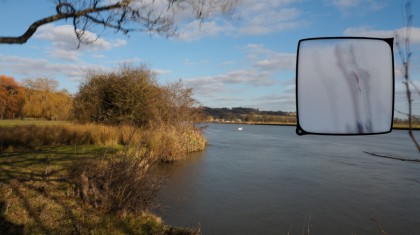Why you can trust TechRadar
One of the main attractions of the OM-D E-M5 Mark II is its High Res Mode that enables it to record 40-million-pixel JPEG images or 64-million-pixel raw files. As you might imagine, this isn't completely without compromise. Sensitivity is limited to ISO 100 (the low extension setting) to 1600, the minimum aperture to f/8 and the slowest shutter speed available is 8 seconds.

Click here for a full resolution version.

Click here for a larger version.
The High Res Shot raw files also have to be processed in different software, a free Photoshop plug-in. This is compatible with the 64-bit version of CS5 or newer Adobe Photoshop and will not function properly with a 32-bit version. You don't get the extensive controls that we're used to from Adobe Camera Raw, but aspects such as the exposure, white balance, contrast and sharpness can all be adjusted.
As mentioned previously, it's essential that the camera is stationary and that the subject doesn't move when shooting in High Res Shot mode. Even small movements result in a hatched pattern appearing and/or ghosting in images.

Click here for a full resolution version.

Click here for a larger version.
Sign up for breaking news, reviews, opinion, top tech deals, and more.
When the camera and subject are motionless, however, the results are very impressive. As our lab results show, the images have a significant boost in detail resolution over standard size images.
Olympus prefers to refer to the camera as a 40Mp model because the engineers believe that although the raw files open to 64Mp, they only resolve a level of detail that's equivalent to that from a '40Mp camera'. Of course it depends upon what format that camera is; let's not forget that the Four Thirds type (17.3 x 13mm) sensor inside the OM-D series cameras is smaller than both APS-C and full-frame format. But our lab tests show that at the lowest sensitivity settings the E-M5 Mark II can match the full-frame 36Mp Nikon D810 for resolving power. It drops away from the D810 a little as sensitivity rises, but as the camera has to be tripod mounted and the subject motionless, there will be few occasions when sensitivity needs to be raised above ISO 100 or 200.

Standard 16MP resolution. Click here for a full size version.

The 40MP version shows a lot more fine detail. Click here for a full size version.

It's also possible to produce 64MP images from the camera's High Res raw files. Click here for a full size version. Olympus still considers 40MP to be the E-M5 II's effective maximum resolution, however.
Comparing simultaneously captured high resolution files at 100% reveals that the JPEGs look slightly sharper and more natural, which seems to bear out Olympus's decision to limit their size at 40Mp. Nevertheless, at 'Print size' in Photoshop the larger 64Mp raw files look superb.

Click here for a full size version.

Click here for a larger version.
At 300ppi the standard 16Mp images measure 39.01 x 29.29cm (15.36 x 11.52 inches) whereas the 64Mp raw files measure 78.03 x 58.52cm (30.72 x 23.04 inches). Even the 40Mp JPEGs measure an impressive 61.77 x 46.33cm (24.32 x 18.24 inches).
Current page: 40MP High Res mode
Prev Page Controls and viewing system Next Page General performance